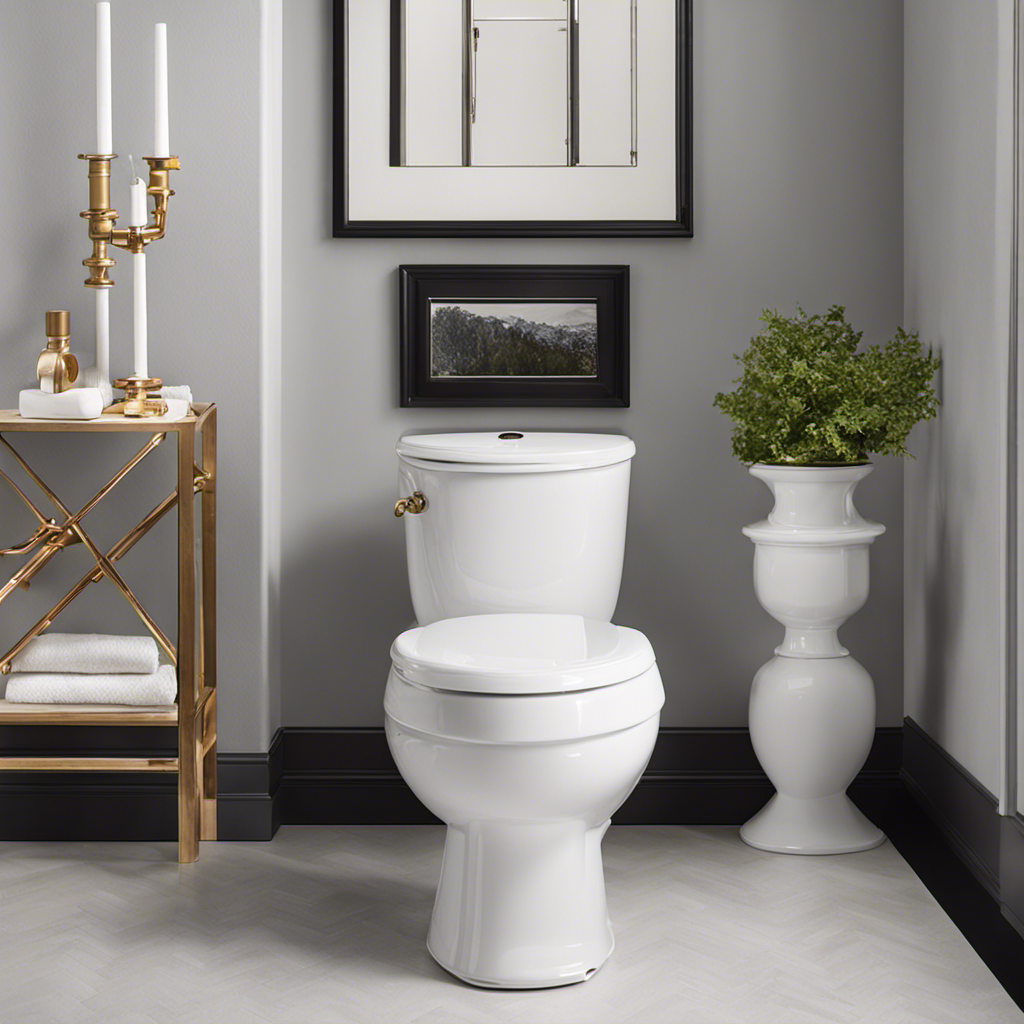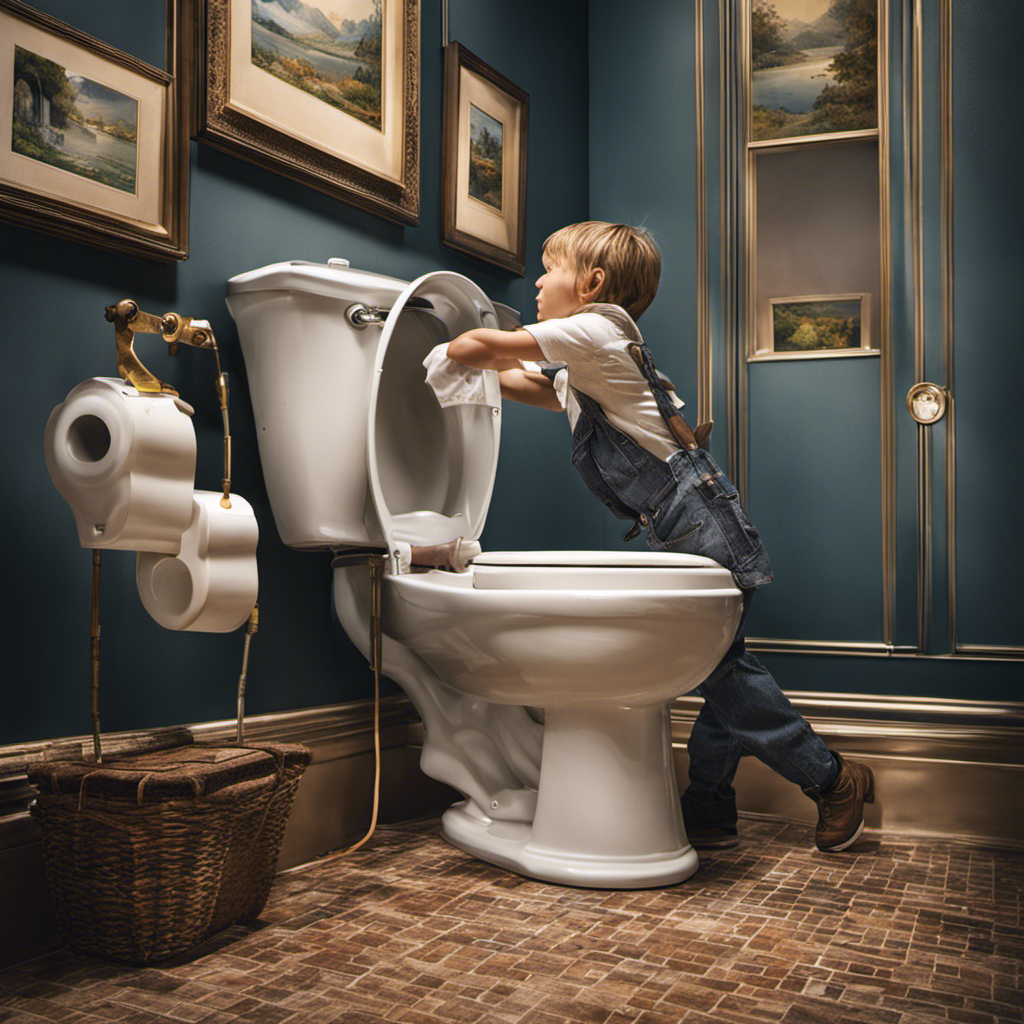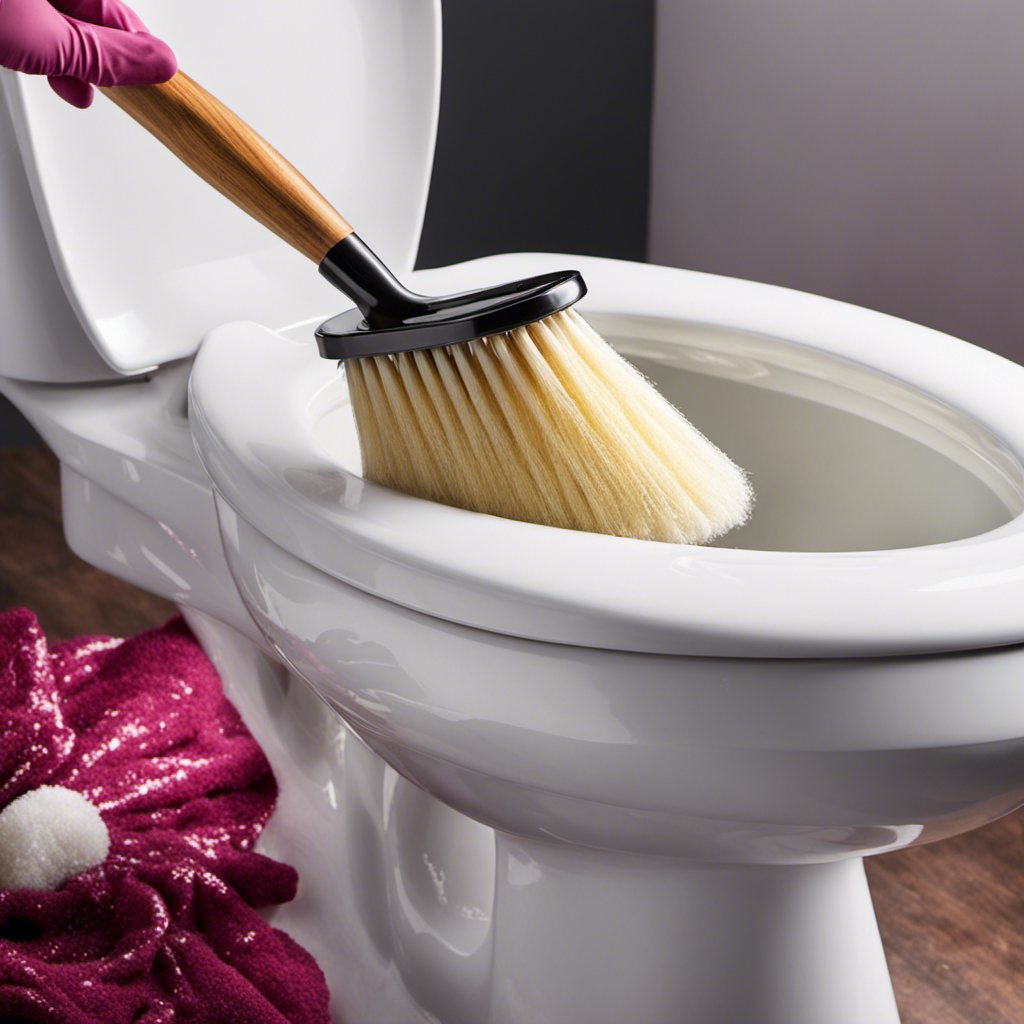Did you know that a toilet overflow can cause thousands of dollars in damage to your home? In this article, I’ll share some tips and tricks on how to prevent this messy and costly issue.
From common causes of toilet overflow to quick fixes and preventive measures, I’ll provide you with all the information you need to keep your bathroom dry and problem-free.
So, let’s dive in and learn how to stop toilet overflowing once and for all.
Key Takeaways
- Clogs in the pipes and excessive water pressure are common causes of toilet overflow.
- Rapidly rising water level and gurgling sounds are signs of an impending overflow.
- Quick fixes like using a plunger, pouring hot water, or using a toilet auger can help stop toilet overflow.
- Regular toilet maintenance, avoiding flushing non-flushable items, and seeking professional help when DIY methods fail are important preventive measures for avoiding toilet overflow.
Common Causes of Toilet Overflow
One of the most common causes of a toilet overflowing is a clog in the pipes. When the toilet clogs, it prevents the water and waste from flowing down the drain properly. As a result, the water level in the bowl rises rapidly, eventually leading to an overflow.
Another factor that can contribute to a toilet overflow is excessive water pressure. If the water pressure is too high, it can force more water into the toilet bowl than it can handle, causing an overflow.
It is important to address toilet clogs and monitor water pressure to prevent potential overflows.
Now, let’s discuss the signs that your toilet is about to overflow.
Signs That Your Toilet Is About to Overflow
If you notice water rising rapidly and hear gurgling sounds coming from the bowl, your toilet’s likely on the verge of overflowing. To prevent this messy situation, it’s important to be aware of the signs that indicate a potential overflow.
Regular toilet maintenance is key to avoiding such issues. Simple DIY toilet repairs can help you keep your toilet in proper working order. Regularly checking the water level in the tank, ensuring the flapper is functioning correctly, and addressing any leaks or clogs promptly can go a long way in preventing an overflow.
By being proactive with toilet maintenance, you can avoid the hassle and mess of dealing with an overflowing toilet.
Now, let’s explore some quick fixes to stop a toilet from overflowing.
Quick Fixes to Stop a Toilet From Overflowing
To prevent a messy situation, it’s crucial to address the issue promptly and implement quick fixes when your toilet is on the verge of overflowing. Here are some DIY solutions for toilet repair that can help you stop the toilet from overflowing:
| Quick Fix | Description |
|---|---|
| Plunger | Use a plunger to create suction and dislodge any clogs in the toilet drain. |
| Hot water | Pour hot water into the toilet bowl to dissolve any blockages. Be careful not to use boiling water as it may crack the porcelain. |
| Toilet auger | A toilet auger is a tool specifically designed to remove stubborn clogs. Insert the auger into the toilet drain and rotate it to break up the blockage. |
These quick fixes can save you time and money by preventing the need for professional intervention. Remember to always exercise caution when attempting DIY solutions and seek professional help if the problem persists.
Preventive Measures for Avoiding Toilet Overflow
Take the necessary preventive measures to avoid a potential mess by regularly maintaining your toilet and being mindful of what you flush down. Proper toilet maintenance is crucial in preventing overflowing and costly repairs.
Here are some DIY plumbing solutions to keep your toilet in good working condition. First, check for any leaks or cracks in the toilet bowl or tank. Ensure that the flapper valve is functioning correctly and replace it if necessary.
Regularly clean the toilet bowl and remove any mineral deposits or debris that may clog the pipes. Avoid flushing items like wipes, paper towels, or feminine hygiene products, as they can easily cause blockages.
Lastly, consider installing a toilet snake or plunger for quick fixes when minor clogs occur. By following these preventive measures, you can avoid toilet overflow and maintain a smoothly running bathroom.
When to Call a Professional for Toilet Overflow Issues
When you’re experiencing a toilet overflow issue, it’s important to know when it’s time to call a professional for assistance. While there are some DIY methods for unclogging a toilet, there are certain situations where it’s best to leave it to the experts.
Here are four reasons why calling a professional for toilet overflow issues is the right choice:
-
Expertise: Professionals have the knowledge and experience to diagnose and fix the problem quickly and efficiently.
-
Safety: Dealing with toilet overflow can be messy and unsanitary. Professionals have the proper equipment and protective gear to handle the situation safely.
-
Damage prevention: Toilet overflow can cause water damage to your bathroom floor and walls. Professionals can identify and fix any underlying issues to prevent further damage.
-
Cost-effective: While DIY methods may seem cheaper at first, improper handling can lead to costly repairs in the long run. Hiring a professional ensures the problem is fixed correctly the first time, saving you money on future repairs.
Calling a professional for toilet overflow issues ensures a timely and effective solution, giving you peace of mind.
Conclusion
In conclusion, taking prompt action is crucial when dealing with a toilet overflow.
By understanding the common causes and recognizing the signs of an impending overflow, one can quickly implement the necessary fixes to prevent further damage.
Regular maintenance and preventive measures are key in avoiding future incidents.
However, if the issue persists or becomes too complex, it’s wise to seek professional assistance.
Remember, a stitch in time saves nine, and addressing toilet overflow issues promptly can save you from costly repairs down the line.










